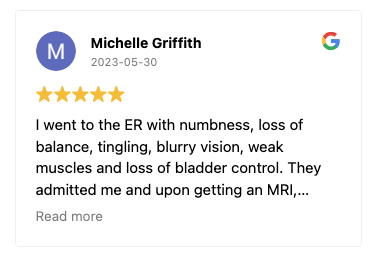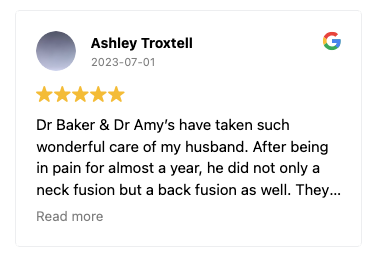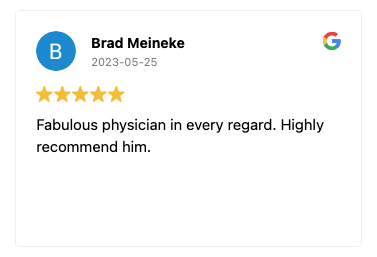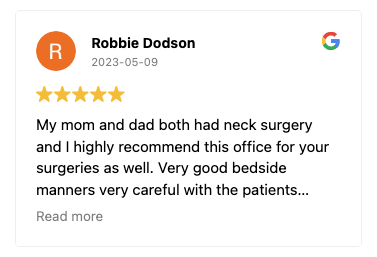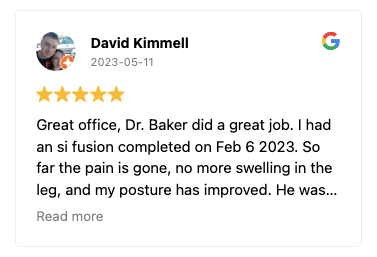L2-L3 Disc Herniation: Causes, Symptoms, and Treatment
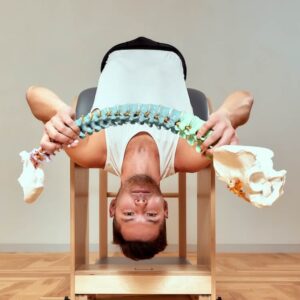
This occurs when the disc between the second and third lumbar vertebrae becomes damaged, leading to the soft inner material pushing out through the tough exterior.
This type of herniation can put pressure on nearby nerves, resulting in pain, weakness, or discomfort.
The lumbar region is particularly susceptible to disc herniations due to the amount of weight and stress it bears daily, which is why herniations at this level are relatively common.
Request an Appointment
Causes and Symptoms of a Herniated Disc in the Lumbar Spine
A herniated disc in the lumbar spine occurs when the outer layer of the disc weakens or tears, allowing the soft jelly-like material inside to protrude into the intervertebral disc space.
This often leads to a pinched nerve, causing pain and discomfort. The lumbar spine is particularly vulnerable to disc herniation due to the high amount of pressure it bears during everyday activities, such as bending, lifting, and sitting.
When a herniated disc occurs, it can result in a variety of symptoms depending on the severity and location.
Back pain is often the most prominent sign, but leg pain, leg weakness, and tingling or numbness in the lower extremities are also common.
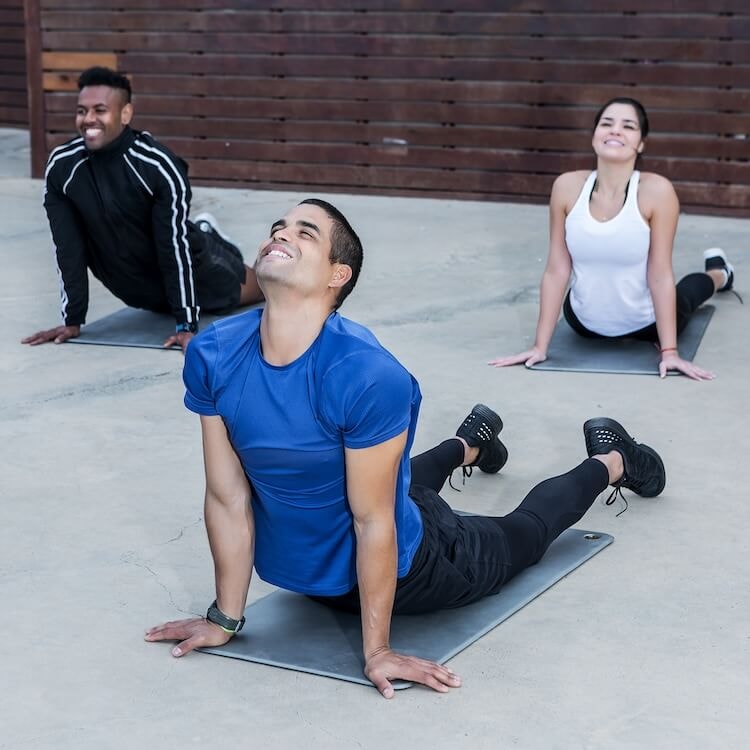
In more severe cases, patients may experience loss of bladder control or bowel control, which requires immediate medical attention.
Many patients with a bulging disc or herniated disc also describe a sensation where they feel pain in a slow and controlled manner when they move, especially when transitioning from one position to another.
The pain may radiate down one or both legs, worsening when sitting or standing for long periods. For some, neck pain can also be present, especially if multiple discs are involved, although this is more common in cervical disc herniations.
Managing Herniated Discs Through Physical Therapy
For most patients, herniated discs can be managed effectively with physical therapy. This non-invasive treatment option focuses on strengthening the muscles around the lumbar spine, improving flexibility, and promoting proper posture to reduce stress on the spine.
Physical therapists often design customized programs to target specific areas affected by the lumbar disc herniation, helping patients regain mobility and function.
Physical therapy for disc herniation involves a combination of stretches and exercises that aim to alleviate symptoms and support the body’s natural healing process.
Herniated disc stretches are particularly important as they help reduce pressure on the spinal nerves. For example, patients may be advised to perform stretches with their knees bent, which helps take pressure off the lower back and minimizes discomfort. These exercises, when performed in a slow and controlled manner, can relieve pain and prevent further injury.
In more severe cases, where bowel or bladder control is affected, physical therapy alone may not be enough, and additional medical interventions may be necessary.
However, for most individuals dealing with lumbar disc herniation, physical therapy can significantly improve their quality of life and help them avoid surgical intervention.
Effective Treatment for Herniated Discs: Exercises and Spinal Decompression
Herniated disc exercises play a vital role in managing pain and improving mobility for those suffering from a herniated disc.
These exercises are designed to support the spinal column, strengthen the surrounding muscles, and alleviate pressure on the affected nerves.
One of the most common methods used in physical therapy is spinal decompression, which helps to relieve the pressure caused by the herniated disc pressing against nearby nerves.
A typical exercise may involve lying in a prone position with a bent knee, gently stretching the lower back. For instance, a patient may be instructed to slowly prop themselves up using their arms, allowing the spine to extend and relieve the tension.
This movement helps create space between the vertebrae, reducing the compression on the disc. As the person feels pain ease, they may be guided to switch legs during stretching to ensure both sides of the spine receive adequate relief.
Another essential technique involves slightly curving the spine during certain movements to further stretch the back muscles and improve flexibility.
These exercises, when performed regularly and in a slow and controlled manner, can help patients achieve long-term relief and prevent future episodes of pain.
Specific Exercises to Treat Herniated Disc and Improve Recovery
Herniated disc exercises are essential for addressing issues related to a herniated disc in the lumbar spine. These exercises are specifically designed to promote flexibility, strength, and alignment in the spine while helping to reduce pain.
A common disc problem associated with bulging discs often results from poor posture, heavy lifting, or improper body mechanics. Over time, this can lead to more pressure on the spinal cord, worsening the condition. Incorporating specific exercises can alleviate these issues and support the spinal cord.
One beneficial exercise for those suffering from lumbar disc herniation is the cobra pose. Starting in a prone position, the patient slowly lifts their upper body, keeping their hands positioned under their shoulders.
This movement helps to extend the spinal cord, relieve pressure, and ease pain caused by the disc herniation. Gently pull the torso up, keeping one leg flat on the floor. Hold this end position for a few moments before returning to the starting position.
The bird dog exercise is another highly effective technique. Starting in a plank position, left arm extended and right leg outstretched, this exercise helps strengthen the back muscles while maintaining stability in the spinal cord.
After holding for a few seconds, switch legs and arms, alternating between the left leg and right leg to evenly distribute the stretch and support across the back.
For patients experiencing discomfort in the affected leg, another beneficial stretch involves lying on the back with one knee bent, using one leg to stabilize while performing a gentle pull on the other.
This slow stretch, in combination with herniated disc exercises, can promote a speedy recovery by easing pressure on the spinal cord and encouraging muscle relaxation.
To further enhance results, slowly rounding the spine during stretching exercises can help correct poor posture, another contributor to disc herniation.
For an advanced version, incorporating both the cobra pose and bird dog into daily routines can result in significant improvements over time.
For individuals with more severe symptoms, treatment options such as spinal decompression or medical interventions may be recommended to restore function and improve quality of life.
With consistent effort and the right exercises, many patients can become symptom-free and maintain better spinal health.
Additional Exercises for Lumbar Disc Herniation Relief
For those dealing with lumbar disc herniation, regular herniated disc exercises can be vital for relieving back pain and promoting flexibility. One effective stretch involves lying on your back with your feet flat on the floor and your crossed knee over the opposite leg.
From this position, gently pull your right leg toward your chest for a comfortable stretch. This movement helps to release tension in the lower back and hips, reducing the pressure on the affected nerves. Hold for a few seconds before slowly returning to the starting position and repeating the stretch with the other leg.
Another highly beneficial exercise for easing back pain and improving spinal flexibility is the cat cow stretch. In a prone position, start by arching the back upwards (the "cat" pose) and then smoothly transitioning to curving the spine downward (the "cow" pose).
This stretch can help improve mobility in the lumbar spine and reduce discomfort caused by lumbar disc herniation. The slow, rhythmic movement ensures that the spinal cord and surrounding muscles remain flexible while easing pain.
Other exercises such as spinal twists, bridges, and herniated disc exercises like the bird dog can be incorporated to further alleviate tension and strengthen the core muscles.
These exercises, when done regularly and in a controlled manner, can be key to maintaining a strong, healthy back and preventing further complications from a herniated disc.
Dr. Abdul Baker - An Expert Neurosurgeon in Texas
Every neurosurgery has its complications; thus, a patient must choose the best neurosurgeon for himself. Dr. Abdul Baker is one of the most experienced and qualified neurosurgeons in Texas, treating patients for more than 16 years. People in Sherman, Plano, and nearby areas trust him for every kind of neurosurgery due to his surgical procedures’ 100% success rate. You may visit him if you need any consultancy or treatment regarding your brain and spine disorders.


Dr. Baker specializes in neurosurgery, neurosurgical spine surgery, neurotrauma, brain tumors, spinal tumors, and peripheral nerve damage treatment.
